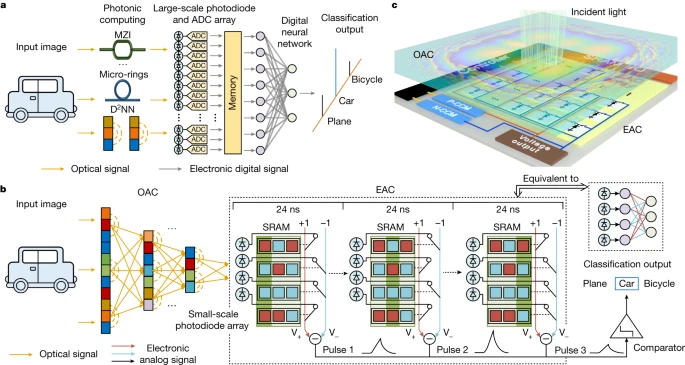The deployment of photonic systems remains a challenge, say the researchers, because of complicated optical nonlinearities, considerable power consumption of ADCs for downstream digital processing and vulnerability to noises and system errors.
ACCEL Architecture:

The proposed PIC has a systemic energy efficiency of 74.8 peta-operations per second per watt and a computing speed of 4.6 peta-operations per second (more than 99% implemented by optics), corresponding to more than three and one order of magnitude higher than state-of-the-art computing processors, respectively.
After applying diffractive optical computing as an optical encoder for feature extraction, the light-induced photocurrents are directly used for further calculation in an integrated analogue computing chip without the requirement of analogue-to-digital converters, leading to a low computing latency of 72 ns for each frame.
ACCEL Implementation:

With joint optimisations of optoelectronic computing and adaptive training, ACCEL achieves competitive classification accuracies of 85.5%, 82.0% and 92.6%, respectively, for Fashion-MNIST, 3-class ImageNet classification and time-lapse video recognition task experimentally, while showing superior system robustness in low-light conditions (0.14 fJ μm−2 each frame).
 Electronics Weekly Electronics Design & Components Tech News
Electronics Weekly Electronics Design & Components Tech News



